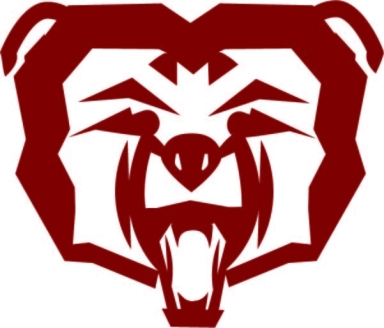Pathway: Fire & Emergency Services
Students enrolled in the Fire and Emergency Services Pathway will get many opportunities to experience the rewarding fields of fire and emergency services with authentic activities and challenging coursework. The program allows students to handle equipment, develop skills, and complete basic elements of both fire protection and emergency medical services. After completing the pathway, students will have hands on experience and training in theses exciting fields.
Courses
Search Courses
Departments
Pathways
Fire & Emergency Services Courses
| Course | Grade | MHS Credit | College Credit |
|---|---|---|---|
| Required Courses | |||
| Introduction to Fire and Emergency Medical Services | 10-12 | 0.5 | Yes |
| Fire Fighting & Emergency Medical Skills 1 | 10-12 | 0.5 | No |
| Fire Fighting & Emergency Medical Skills 2 | 11-12 | 0.5 | No |
| Wildland Firefighting | 11-12 | 0.5 | No |
| Optional Courses | |||
| Fire Fighting & EMS Wellness | 11-12 | 0.5 | No |
| Fire Fighting & Emergency Medical Skills 3 | 11-12 | 0.5 | No |
| Protective Services Internship 1 | 12 | 0.5 | No |
| Protective Services Internship 2 | 12 | 0.5 | No |
Required Courses
Introduction to Fire and Emergency Medical Services
Course ID: 1510141
Explores the philosophy & history of emergency services. Presents the history of loss of life & property in fire, major medical emergencies, & natural disasters. Covers the responsibility of emergency services in a community, the roles, values & responsibilities of a paramedic & firefighter, an overview of the ICS system & the organization & function of emergency services agencies & allied organizations, education & certification. Includes sources of professional literature, awareness and identification of hazardous materials, emergency services apparatus, fire behavior, detection & protection systems, cultural diversity, harassment in the workplace and survey of professional career opportunities and requirements.
Grades: 10-12
Credits: 0.5 - Applied Arts, Elective, Pathway
CCN
Fire Fighting & Emergency Medical Skills 1
Course ID: 1519941
Fire and EMS Skills is an introduction to the basic skills used in the Fire and Emergency Medical Service professions. Must have the ability to wear personal protective gear, including a helmet and breathing apparatus roughly weighing 40 pounds, and the ability to crawl 200 feet while wearing that equipment.
Grades: 10-12
Credits: 0.5 - Elective, Pathway, Applied Arts
Prerequisites:
Fire Fighting & Emergency Medical Skills 2
Course ID: 1519942
A continuation of Fire and EMS Skills 1. Must have the ability to wear personal protective gear, including a helmet and breathing apparatus roughly weighing 40 pounds, and the ability to crawl 200 feet while wearing that equipment.
Grades: 11-12
Credits: 0.5 - Elective, Pathway, Applied Arts
Prerequisites:
Wildland Firefighting
Course ID: 1515241
Introductory study on wildland firefighting operations. Self-paced online coursework includes study through National Fire Academy, physical conditioning, and hands-on skills. This course will prepare students for certifications required for future employment and introduce students to the organizations that provide wildland firefighting coverage in Oregon and the US.
Grades: 11-12
Credits: 0.5 - Elective, Pathway, Applied Arts
Prerequisites:
Elective Courses
Fire Fighting & EMS Wellness
Course ID: 1515311
Students in this class will learn the lifestyle skills needed to survive their probationary year and then enjoy the remainder of their career in either the Fire or Emergency Medical Services. It will focus on fitness, nutrition, cooking, sleep hygiene, and stress management.
Grades: 11-12
Credits: 0.5 - Pathway, Applied Arts, Elective
Fire Fighting & Emergency Medical Skills 3
Course ID: 1519943
This is a leadership class in conjunction with EMS Skills 1. Students will model skills and behavior for peers. Must have the ability to wear personal protective gear, including a helmet and breathing apparatus roughly weighing 40 pounds, and the ability to crawl 200 feet while wearing that equipment.
Grades: 11-12
Credits: 0.5 - Elective, Pathway, Applied Arts
Prerequisites:
Protective Services Internship 1
Course ID: 1599841
Students obtaining credit through Internships will gain experience with regional agencies by participating in either McMinnville Fire District’s Cadet or Volunteer programs. Students who are not able to participate in those capacities will be placed with regional agencies tailored to their career interests in a rider/job shadow role. Interns will also participate in showcasing pathway activities to outside classes, visitors and prospective students.
Grades: 12
Credits: 0.5 - Elective, Pathway, Applied Arts
Protective Services Internship 2
Course ID: 1599851
Students obtaining credit through Internships will gain experience with regional agencies by participating in either McMinnville Fire District’s Cadet or Volunteer programs. Students who are not able to participate in those capacities will be placed with regional agencies tailored to their career interests in a rider/job shadow role. Interns will also participate in showcasing pathway activities to outside classes, visitors and prospective students.
Grades: 12
Credits: 0.5 - Elective, Pathway, Applied Arts
Prerequisites:

